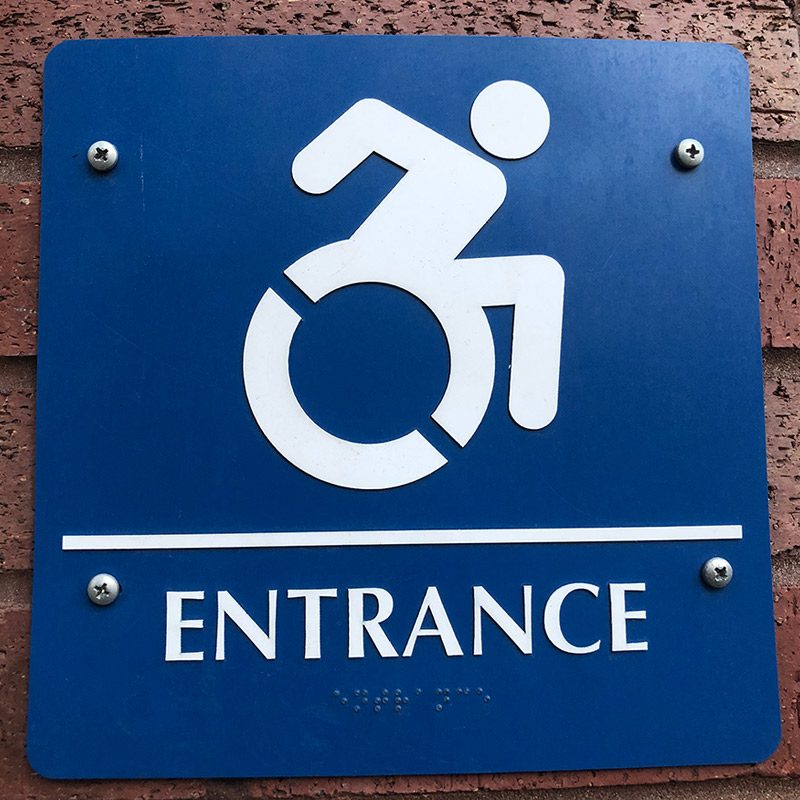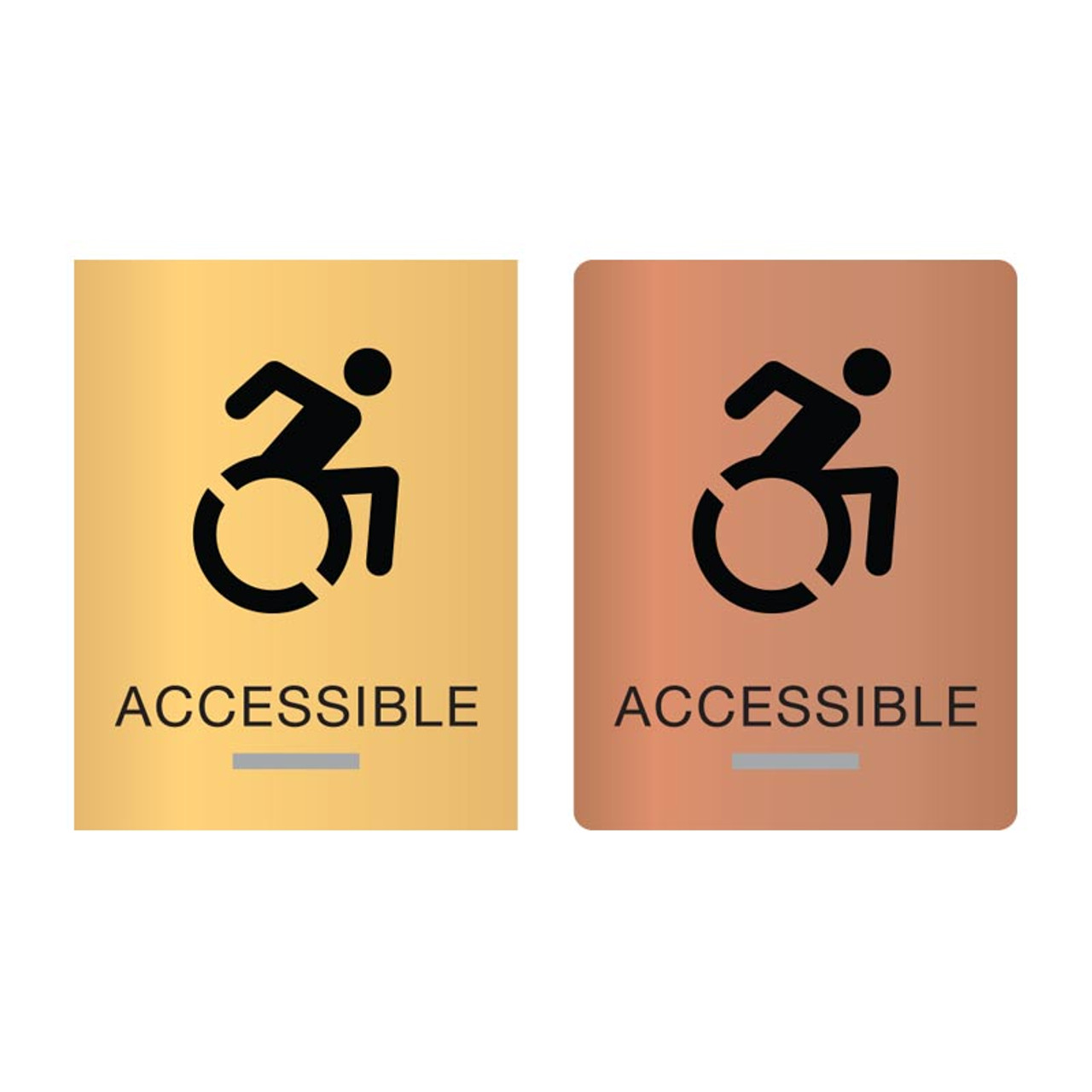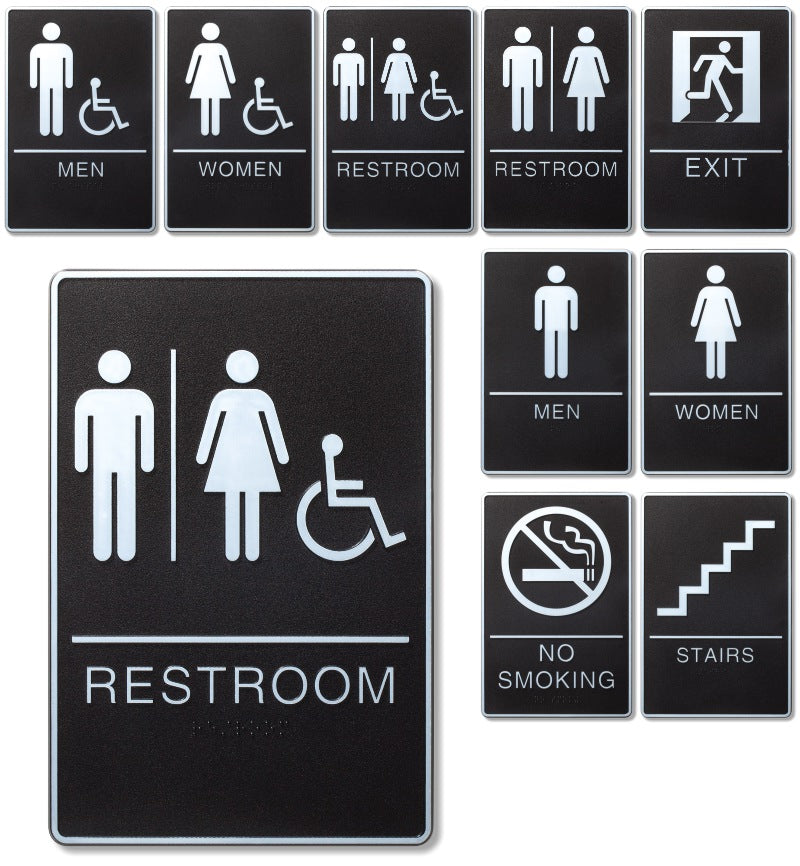Discovering the Trick Attributes of ADA Indicators for Boosted Accessibility
In the world of availability, ADA indications offer as silent yet effective allies, guaranteeing that spaces are navigable and inclusive for individuals with impairments. By incorporating Braille and responsive components, these indications damage barriers for the aesthetically damaged, while high-contrast shade schemes and readable fonts cater to varied aesthetic needs.
Value of ADA Conformity
Ensuring conformity with the Americans with Disabilities Act (ADA) is critical for promoting inclusivity and equivalent access in public rooms and work environments. The ADA, passed in 1990, mandates that all public facilities, companies, and transport services suit individuals with handicaps, ensuring they delight in the same rights and opportunities as others. Compliance with ADA requirements not only fulfills legal responsibilities however additionally boosts a company's credibility by demonstrating its dedication to diversity and inclusivity.
One of the essential elements of ADA conformity is the application of easily accessible signage. ADA indicators are made to ensure that individuals with specials needs can quickly browse through spaces and structures. These indications have to comply with details guidelines regarding size, font style, color contrast, and placement to guarantee exposure and readability for all. Correctly carried out ADA signs helps eliminate obstacles that individuals with disabilities typically encounter, thereby advertising their independence and confidence (ADA Signs).
Additionally, adhering to ADA laws can minimize the risk of lawful effects and potential penalties. Organizations that fail to abide by ADA guidelines might deal with charges or claims, which can be both harmful and economically difficult to their public photo. Hence, ADA compliance is essential to cultivating an equitable setting for everybody.
Braille and Tactile Elements
The consolidation of Braille and tactile elements into ADA signage symbolizes the principles of accessibility and inclusivity. It is typically put beneath the corresponding message on signage to make certain that people can access the details without aesthetic aid.
Tactile components extend beyond Braille and consist of elevated symbols and characters. These components are created to be discernible by touch, allowing individuals to recognize area numbers, bathrooms, exits, and other critical locations. The ADA sets certain guidelines regarding the dimension, spacing, and positioning of these responsive components to optimize readability and make certain uniformity across various settings.

High-Contrast Color Schemes
High-contrast color pattern play a pivotal duty in boosting the presence and readability of ADA signage for individuals with visual problems. These systems are vital as they take full advantage of the distinction in light reflectance in between message and background, guaranteeing that indicators are easily discernible, also from a range. The Americans with Disabilities Act (ADA) mandates using details color contrasts to suit those with minimal vision, making it a vital aspect of conformity.
The effectiveness of high-contrast colors exists in their ability to stand apart in different lighting conditions, consisting of poorly lit environments and locations with glow. Commonly, dark text on a light background or light message on a dark history is used to achieve optimum comparison. Black message on a yellow or white background supplies a stark aesthetic difference that assists in fast recognition and understanding.

Legible Fonts and Text Dimension
When thinking about the style of ADA signage, the selection of clear font styles and ideal text Read More Here dimension can not be overemphasized. The Americans with Disabilities Act (ADA) mandates that typefaces have to be not italic and sans-serif, oblique, manuscript, very ornamental, or of uncommon kind.
The dimension of the message additionally plays an essential function in access. According to ADA guidelines, the minimum message elevation ought to be 5/8 inch, and it must increase proportionally with checking out distance. This is particularly vital in public rooms where signage demands to be checked out swiftly and precisely. Uniformity in text size adds to a cohesive aesthetic experience, aiding people in navigating settings effectively.
In addition, spacing between lines and letters is integral to legibility. Sufficient spacing prevents characters from showing up crowded, boosting readability. By sticking to these criteria, developers can considerably enhance accessibility, additional hints ensuring that signage serves its desired function for all people, despite their aesthetic capabilities.
Efficient Positioning Techniques
Strategic placement of ADA signage is necessary for optimizing access and making sure conformity with legal requirements. ADA standards specify that indications ought to be installed at a height between 48 to 60 inches from the ground to guarantee they are within the line of sight for both standing and seated people.
Additionally, indicators must be put adjacent to the lock side of doors to enable very easy identification before entry. This positioning aids individuals situate spaces and areas without blockage. In situations where there is no door, indicators need to be positioned on the closest surrounding wall. Uniformity in sign placement throughout a center boosts predictability, reducing confusion and enhancing general customer experience.

Verdict
ADA indicators play an important role in website link promoting availability by integrating functions that attend to the requirements of individuals with impairments. These aspects collectively foster an inclusive environment, emphasizing the relevance of ADA conformity in making certain equivalent accessibility for all.
In the world of access, ADA indicators offer as quiet yet effective allies, making certain that spaces are inclusive and navigable for individuals with specials needs. The ADA, passed in 1990, mandates that all public facilities, employers, and transport services accommodate individuals with handicaps, guaranteeing they enjoy the exact same legal rights and chances as others. ADA Signs. ADA indications are developed to make certain that individuals with disabilities can conveniently navigate through rooms and structures. ADA guidelines specify that indications should be placed at a height in between 48 to 60 inches from the ground to guarantee they are within the line of view for both standing and seated people.ADA indications play a crucial role in promoting accessibility by integrating attributes that address the requirements of people with specials needs